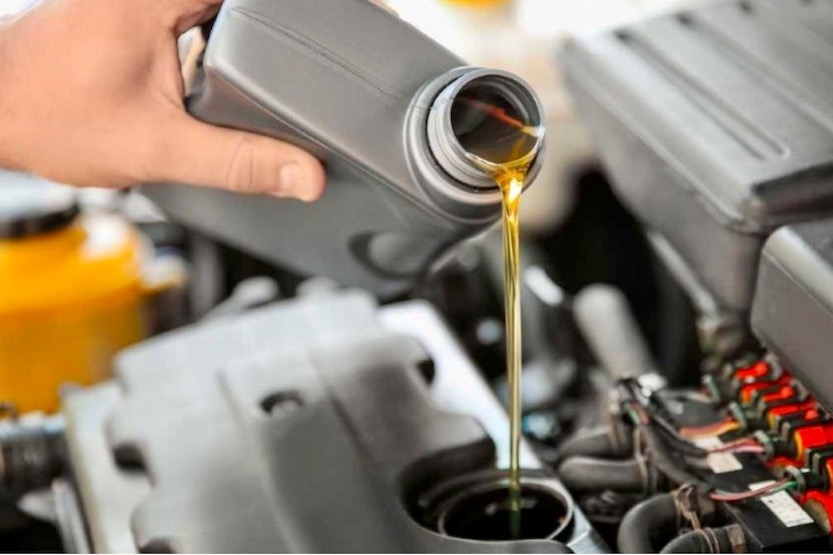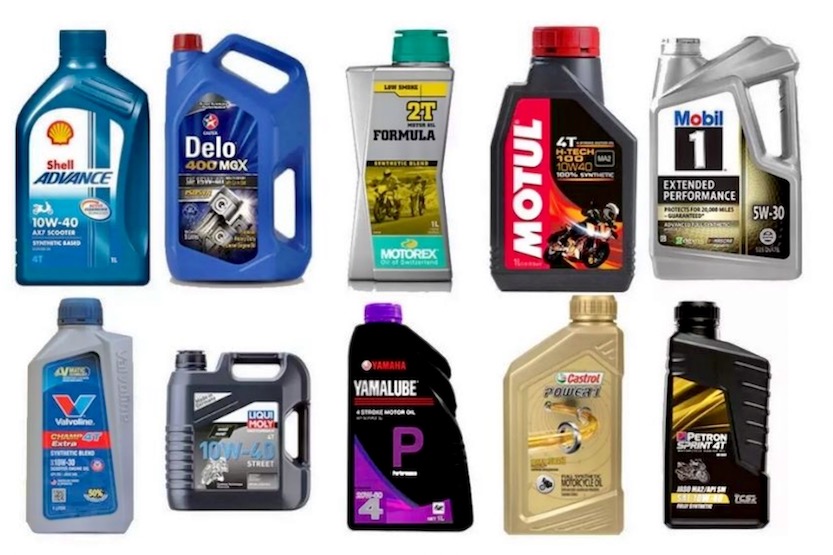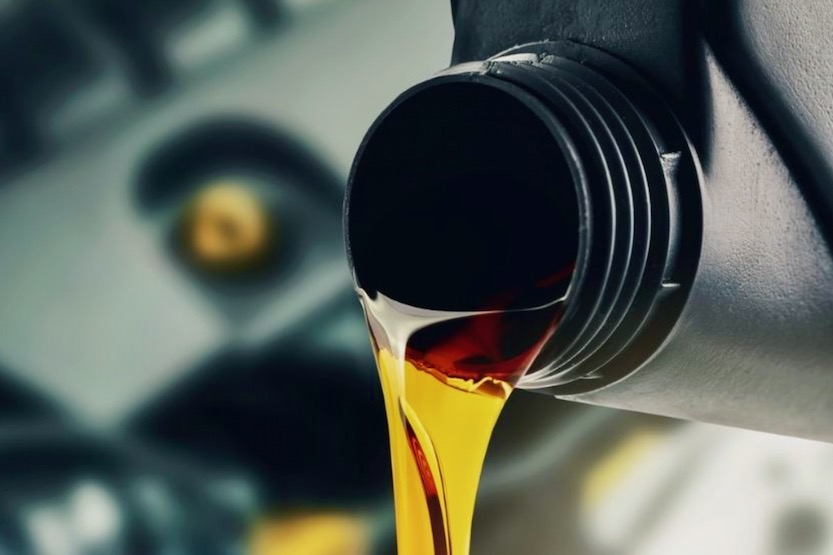When we say oil weight, it talks about the viscosity of an oil. It refers to how well the oil flows at a specific temperature. A common question is whether you can mix oil weights or not. For example, can you mix 5w30 and 10w30 oil? Is mixing oil weights bad?
In general, mixing oil weights is not recommended. However, several viscosity grades are compatible and possible to mix, provided that they are under one motor oil brand. But still, doing so will produce a new viscosity that is not the same as the original oil in the engine or the original oil to be added.
Your engine may seem to work just fine with the mixture initially. But this might not be the case in the long run.
Read on to learn more about mixing motor oil weights and other topics related to it.
Mixing Oil Weights

Generally, mixing oil weights is not recommended. But several viscosity grades are compatible and possible to mix, provided that they are under one motor oil brand. However, doing so will produce a new viscosity that is not the same as the original oil in the engine or the original oil to be added.
5w30 and 10w30 are two of the most common motor oils. 10w30 oil is thicker and heavier than 5w30 oil because it has a higher viscosity at low temperatures. The engine oil will flow slower than 5w30 when it is cold.
So is it okay to mix the heavier 10w30 oil with 5w30 oil? Yes, you can mix these two oils if you are topping up. If your oil needs to be topped up, you are burning oil already so that the difference won’t cause any damage.
10w30 and 5w30 oils are essentially the same at operating temperature. It is only in cold weather that the performance will be different.
Let’s look closer at mixing oil weights.
How Much Oil Does My Car Need?
Can You Mix Two Different Types of Motor Oil Viscosity?
Drag racers often ask if they can mix two different types of motor oil viscosity to customize their own oil viscosity. While you may have heard of some drivers doing this, it is not as simple as it sounds. You have to be an expert to do this successfully.
Many things need to be learned because many potential complications will arise if you don’t do this right. Suffice it to say that, generally speaking, the answer is no, we should forget about considering mixing motor oil weights at all.
Let’s talk about these three factors:
- Additive Formula and Chemistry
- The Viscosity of the Mixture
- Uncertainty of Oil Mixture Stability
1. Additive Formula and Chemistry
The additive formula that is used to create each type of viscosity produces varying chemistry. Therefore, there is no way to identify how effective the mixture will be. At the same time, we have no way of knowing how it will affect longevity unless you are willing to conduct a trial-and-error approach.
2. Viscosity of the Mixture
When mixing oil weights, the mixture’s viscosity will most likely produce an engine oil somewhere in the range of SAE 40. However, in terms of its winter viscosity, or what is commonly indicated as simply “W,” we can only guess where it will end up.
You can vary chemistry to create a new engine oil viscosity. But mixing two varying oil weights will hardly enable you to achieve your desired result.
3. Uncertainty of Oil Mixture Stability
We can never be certain of how stable the mixture of two oil weights will be. Your vehicle’s engine may be running well now with the mixture of two oil weights. But you can never tell how it will behave under other conditions. For all you know, it might not be able to withstand extreme heat and other factors.
This means that it’s always best to use a single type of motor oil guaranteed to perform at its best.
Can You Mix Motor Oils of the Same Viscosity?
Is it possible to mix 10W-30 and 5W-30 motor oil in your vehicle’s engine? Both of these have SAE 30 weight. Therefore, it is definitely better than mixing two different oil grades.
However, this mixture might only be acceptable for a top-up. This is most likely not ideal for a complete service interval.
Can You Mix Two Different Brands of Motor Oil?

What if you only need to top up your engine’s oil level? Can you mix two different brands of the same oil weight? Yes, this is acceptable. However, you are not advisable to make this a habit.
For instance, you are in the middle of a long trip. Then, you realize that your Quaker State 5W-30 oil needs a top-up. Unfortunately, only the Valvoline 5W-30 oil is available in the car care shop nearest you. In which case, you can use the Valvoline 5W-30 oil as a top-up.
But you must remember that these oils vary slightly in chemical levels. This is what makes the brands distinct from each other. Therefore, even if both are 5W-30, they slightly differ in viscosity. While it is acceptable to mix a different brand as a top-up, it is not recommended.
Can Synthetic and Conventional Oil Be Mixed Together?
For instance, your car’s engine oil needs to be changed. But you want to switch from conventional to synthetic oil. Is this possible? The answer is yes.
Switching from conventional to synthetic should not be a problem. During the “change oil” process, there will most likely be a small amount of conventional oil left in the engine as it is difficult to drain it 100%.
Mixing synthetic oil with a minimal amount of conventional oil is not expected to create damage to your vehicle’s engine. But if you mix a large amount of synthetic oil with a large amount of conventional oil, it will most likely damage your engine.
Is It Acceptable to Mix Gasoline Engine Oil and Diesel Engine Oil?
Heavy-duty diesel engine oil and gasoline engine oil indeed perform the same functions. But their operating environment is not the same.
In most cases, diesel engine oils meet the standard industry specifications for gasoline engines. But in the case of gasoline engine oils, they do not match diesel engines at all. Gasoline engine oils are not at all equipped to handle the pressures of heavy-duty diesel engines.
There are, however, formulas that are designed specifically for both diesel and gasoline. In which case, you can do this. Just make sure that the manufacturer confirms this and that it is ideal for your vehicle. But if you intend to mix them out of your own discretion and without professional guidance, this is not a good thing to do.
So, to reiterate, it is possible to top up a gasoline-powered vehicle with diesel engine oil for as long as it meets proper industry specifications. On the contrary, topping up a heavy-duty diesel engine with a motor oil designed for gasoline engines is not at all advisable.
Understanding Oil Weight
Now that we have discussed the disadvantage of mixing oil weights, it is best to learn more about oil weights.
When we say oil weight, it doesn’t literally talk about how much the oil weighs. It instead talks about the viscosity or the thickness of the motor oil. It has something to do with the life of your vehicle’s engine.
The motor oil you choose for your vehicle heavily depends on the manufacturer’s recommendations. It also relies on the climate where you live and the driving you do.
Oil Weight and Flow
The term “oil weight” refers to the viscosity or the thickness of an oil. It talks about how smoothly it flows at a specific temperature.
Viscosity numbers, or weights, are assigned by the Society of Automotive Engineers (SAE). It is assigned to each oil according to its flow at 210° F. This temperature is more or less the standard operating temperature for most motors, if not all.
The higher the viscosity number, the thicker the oil is. This also means that the oil flows gradually. And it has something to do with how it coats the components of the internal engine. At the same time, it is linked to how it protects against friction and heat.
Suffice it to say that a 50 weight oil flows slower than a 30 weight oil. They don’t offer a similar level of protection during stressful conditions.
What W Means on Oil Bottles
For sure, you have noticed that the packaging of oils indicates two numbers on them that are separated by the letter “w,” such as 5w30.
“W” stands for winter. This states that the oil has a specific viscosity that is different from the others. It has different flow characteristics, depending on the temperature.
For instance, a 5w30 means that the formula is a five-weight oil. But once you warm up the engine to 210°F, it then functions as a 30 weight oil.
This is necessary because you can’t directly use a 30 weight oil in your engine. That would be too thick, and the engine will find it difficult to shoot quickly, especially during cold weather conditions. Worse, it will fail to protect crucial parts of the engine from damages.
At the same time, running on a five-weight oil is impossible too. This time, the oil level is thin and won’t be able to keep your warm engine safe. This explains why your vehicle needs multigrade oil.
In other words, 5w30 means that the motor oil has level five viscosity at low temperature and level 30 viscosity at high temperature. That way, your engine gets the best of both worlds.

What Oil Should You Use for Your Vehicle?
If you’re not sure which oil to use for your vehicle, check your Owner’s Manual. Each vehicle has an Owner’s Manual. In it, you will find the manufacturer’s oil recommendation.
Your vehicle’s manufacturer will indicate a range of oils that you can use for your vehicle. The recommendations take into consideration several factors. These include the weather condition in your area, your driving style, and if your vehicle will be hauling an extra load, among others.
Don’t just buy any motor oil available. Remember that there is no one-size-fits-all formula when it comes to motor oil products. Make sure to refer to your Owner’s Manual or, if not, at least seek professional assistance. Ensure that you will buy the oil grade to provide the best protection for your vehicle’s engine.
What Is the Equivalent of SAE 30 Oil?
SAE and ISO make use of two different scales in measuring viscosity. SAE 10W is equal to ISO 32, while SAE 20 is equal to ISO 46 and 68. As for SAE 30, it is equal to ISO 100.
However, if you ask about SAE 30W, you will never see an oil product labeled as SAE 30W. You can never use a level 30 oil weight at low temperatures in your engine. It will either not start, or it will cause severe damage to your car.
The correct details on the oil packaging should be SAE 5w30 or 10w30. This means that the oil is at level 5 or level 10, respectively, at low temperatures. Then, it eventually becomes level 30 at high temperatures.
Conclusion – Mixing Motor Oil Weights
Generally, mixing oil weights is not recommended. But several viscosity grades are compatible and possible to mix, provided that they are under one motor oil brand. However, doing so will produce a new viscosity that is not the same as the original oil in the engine or the original oil to be added.
If you mix oil weight, your engine may seem to work just fine initially. But this might not be the case in the long run.
While mixing motor oil weights is possible, especially if you switch from conventional to synthetic oils, the mixture should only be a pinch. This means that conventional oil is just a residue. It is not supposed to have any impact once you pour a substantial amount of synthetic oil into your engine.
However, once you start using synthetic oil, you should decide to stick with it forever. Changing from one oil type to another should not become a common practice. There will always be a specific oil that is suited best for your engine. Deviating from this might only cause you a headache.
Related reading:
Can I Use 5w30 Instead of 5w20? [5w30 vs 520 Motor Oil]
10w30 vs 5w30 [What Is the Difference Between 5w30 and 10w30 Oil?]


![Toyota FJ Cruiser Towing Capacity [How Much Weight Can It Tow?] fj cruiser towing capacity](https://roadsumo.com/wp-content/uploads/2021/05/fj-cruiser-towing-capacity-150x150.jpeg)
![How Much Does a Ford F150 Weigh? [F150 Weight] f150 weight](https://roadsumo.com/wp-content/uploads/2021/07/f150-weight-150x150.jpg)
![How Much Does A Smart Car Weigh? [Smart Car Weight] how much does a smart car weigh](https://roadsumo.com/wp-content/uploads/2021/07/how-much-does-a-smart-car-weigh-150x150.jpg)


![Read more about the article Amsoil Vs Mobil 1 [Which is the Better Engine Oil?]](https://roadsumo.com/wp-content/uploads/2021/04/Amsoil-vs-Mobil-1-300x200.jpg)
![Read more about the article How Much Transmission Fluid Do I Need? [How Much to Add]](https://roadsumo.com/wp-content/uploads/2021/06/how-much-transmission-fluid-300x200.jpg)
![Read more about the article Honda Brake Fluid [What You Need to Know]](https://roadsumo.com/wp-content/uploads/2022/02/Honda-brake-fluid-300x200.jpg)